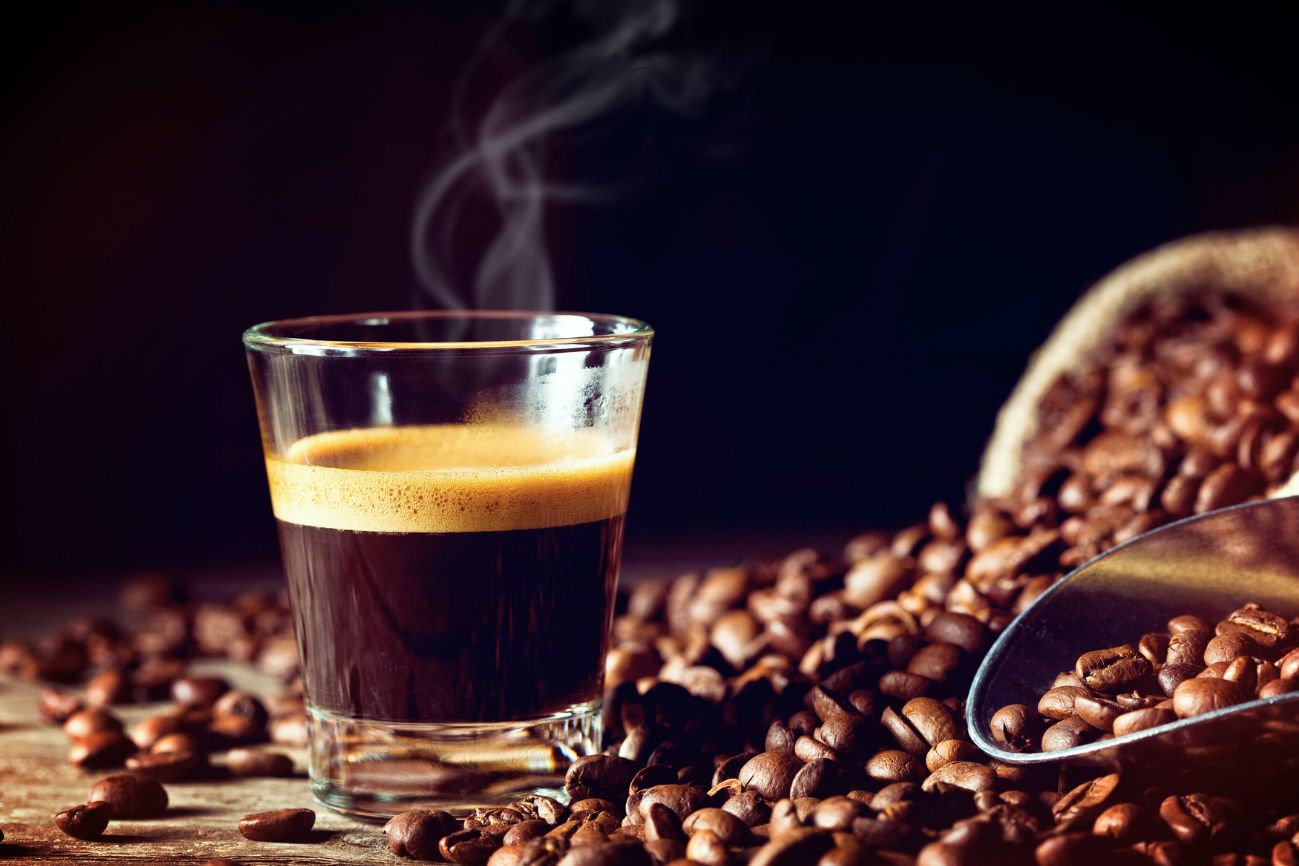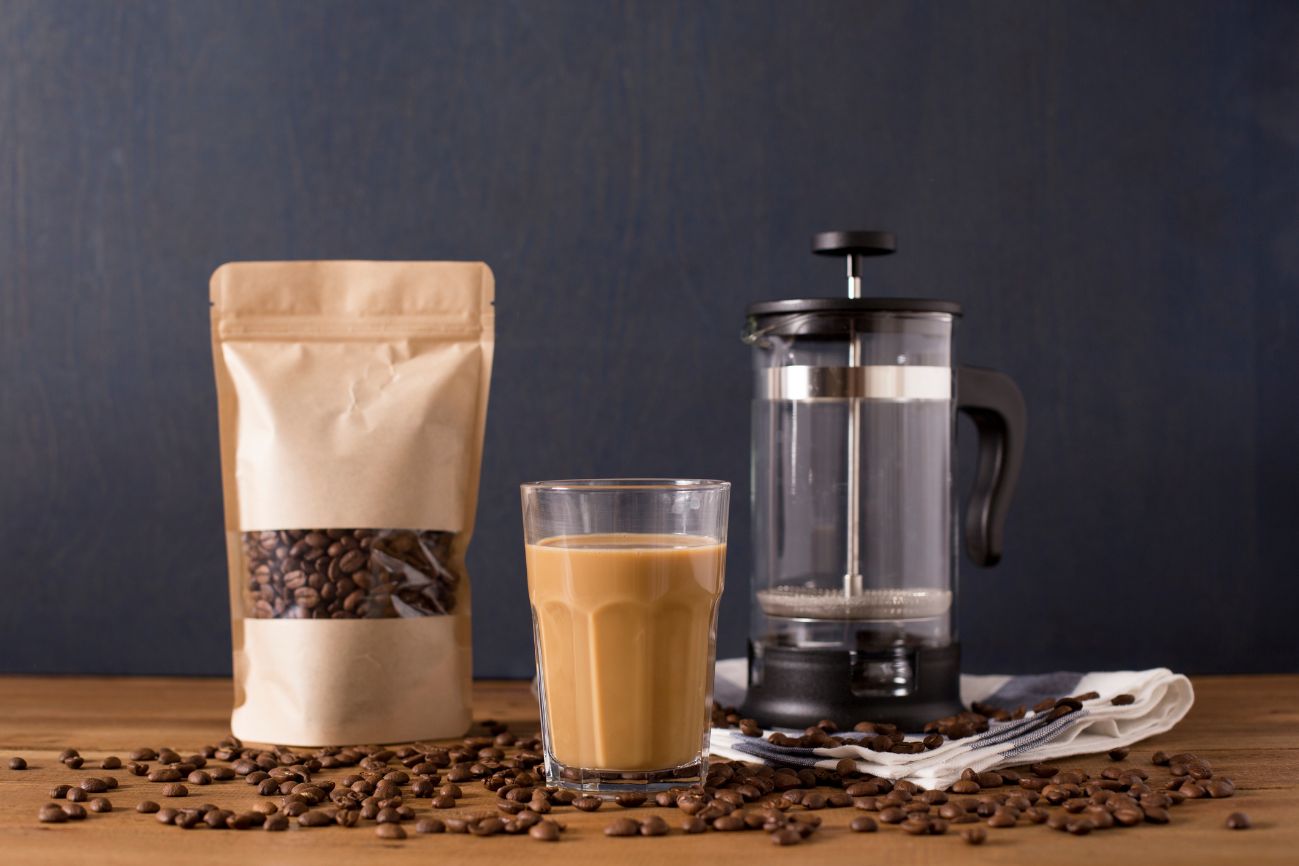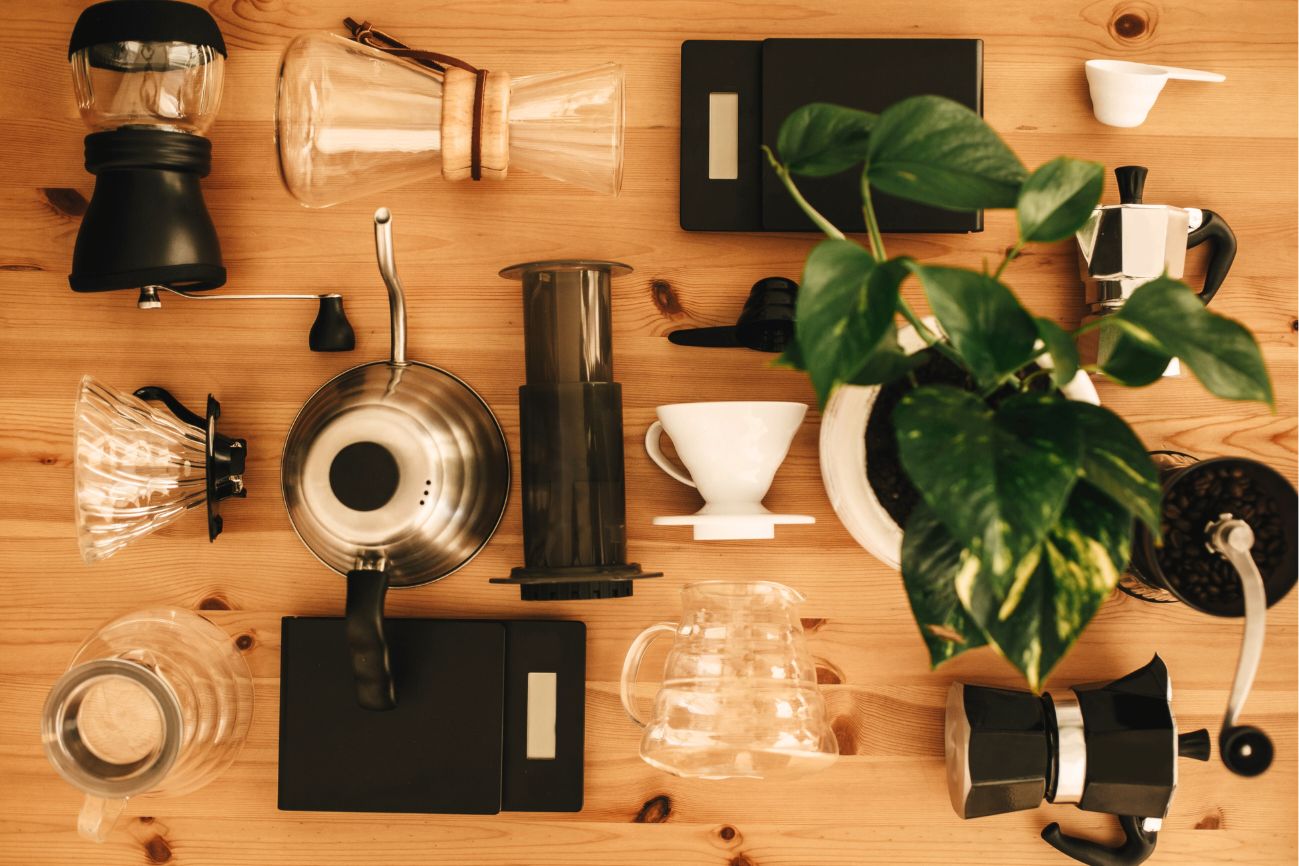According to Coffee Dasher, more than 1 billion people drink coffee around the globe. That is why it is one of the top beverages consumed worldwide. However, the essential properties, like the taste and strength, of the coffee solely depend on the types of beans. Distinguishing between Arabica and Robusta coffee beans is the gateway to appreciating coffee on a deeper level. These two dominant coffee varieties bring unique flavors, aromas, and characteristics to your brewing methods.
In this blog will compare Arabica vs Robusta coffee in a detailed manner. The beans of both are different in nature which is why they vary in all their characteristics. So, without any delay, let’s start.
Summary: Key Difference Between Arabica and Robusta Coffee
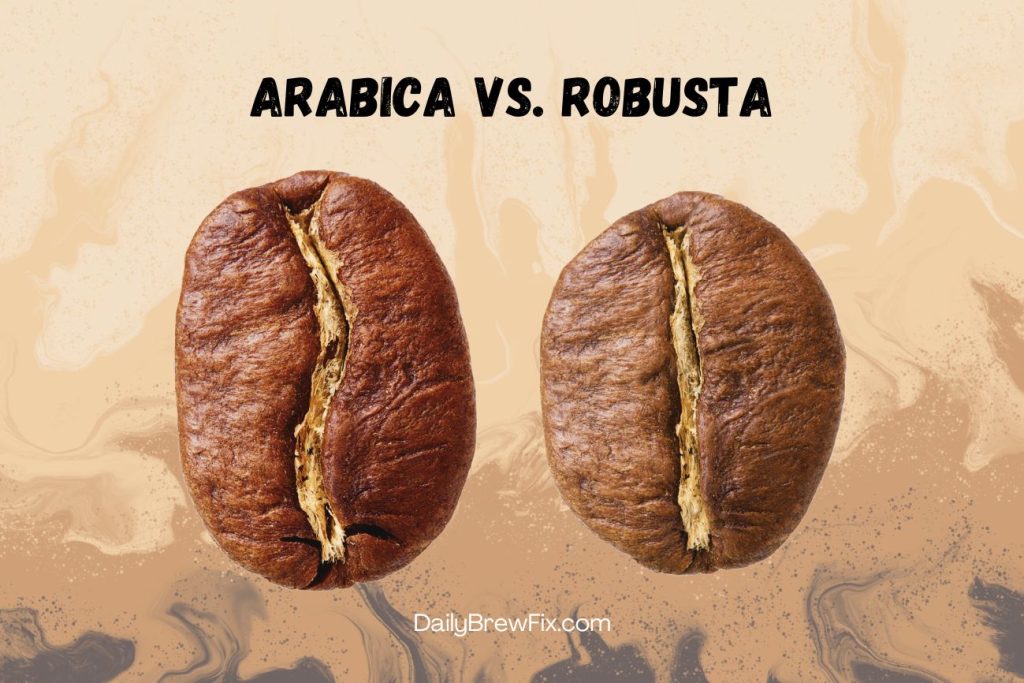
The following table will help you to comprehend the difference between Arabica and Robusta coffee have a look.
| Feature | Coffee Arabica | Coffee Robusta |
| Taste | Smooth, gentle flavor, with pleasant sweet notes | Strong, bitter, with earthy characteristics |
| Caffeine Content | 1.5% caffeine | 2.7% caffeine |
| Appearance | Oval-shaped having a curved line | Rounder shape with a straight line |
| Cultivation Altitude | 1-2 kilometers | 200-800 meters |
| Climate | Avg. temperature15 to 25ºC / shady conditions/ high humidity | Upto 26ºC temperature / ample rainfall / moderate humid conditions |
| Origin | India / East Africa / Papua New Guinea/Latin America | Western Africa /Indonesia Vietnam/Uganda |
What is Coffee Arabica
The Delicate High-Altitude Bean
It is derived from the Coffea arabica plant, which is native to Ethiopia. The leaves of this plant can reach a height of six (6) meters, and its flavor is smooth and fruity with hints of chocolate. Furthermore, due to higher sugar, lipid, and acid content, it tastes sweeter.
Additionally, it contains much less caffeine than robusta beans. Since it represents the majority of coffee production worldwide, it is preferred for premium coffee because of its refined flavor profile.
What is Coffee Robusta
The Sturdy, Low-Altitude Warrior
Robusta coffee is produced from the Coffea Canephora plant, in hot regions like Uganda and Western Africa. These plants are compact, have tiny leaves, capable of growing up to 4.5 meters. Robusta is famous for its intense, slightly bitter taste. Compared to Arabica beans, it contains double the amount of caffeine and has a bold flavor. Furthermore, it’s valued for high caffeine content and for its strong flavor and crema production
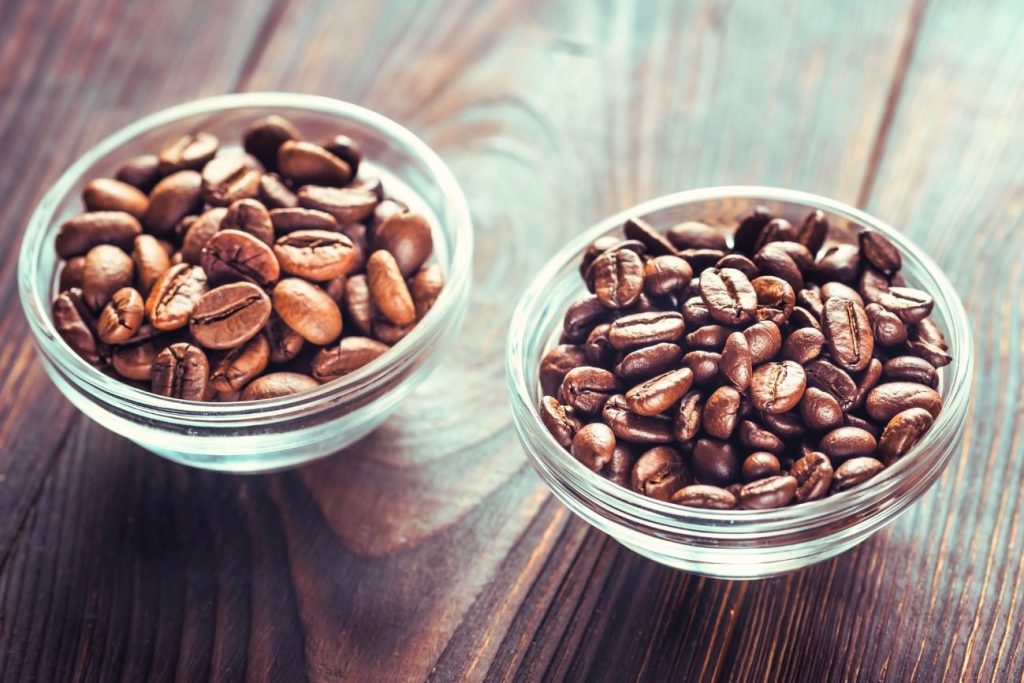
Taste Comparison: Arabica vs Robusta Coffee
Arabica: Complex and Smooth
Arabica coffee is, in most cases, considered superior in taste for its light, nuanced flavor profile, which comes from fruit, nut, and flower notes, making it suitable for someone who prefers a gentler cup.
Robusta: Bold and Bitter
Robusta coffee, on the other hand, has a mouthful of robust and intense taste, mostly bitter earthy notes.
Why Taste Matters
Flavor is an important aspect of making coffee widely popular.
Arabica coffee is the best entry point which introduces these novices into the specialty coffee world, having a well-balanced taste.
Bold in flavor, on the other hand, Robusta coffee is for coffee drinkers who want robust beverages, for example, espresso.
| Aspect | Arabica Coffee | Robusta Coffee |
| Taste Profile | Light, nuanced flavors with notes of fruit, nut, and flowers | Robust, intense flavors with bitter and earthy notes |
| Target Audience | Suitable for those who prefer a gentler, well-balanced cup | Ideal for strong-flavor enthusiasts (e.g., espresso) |
| Sugar Content | Higher sugar content, leading to a sweeter flavor | Lower sugar content, contributing to its bitter taste |
| Purpose | Great for introducing novices to specialty coffee | Preferred for bold and robust coffee experiences |
Arabica vs Robusta: Caffeine Content
Caffeine content is another critical factor in the coffee bean comparison:
Arabica: Moderate Kick
Arabica beans contain around 1.2 ~ 1.5% caffeine on average. While they are lower in caffeine compared to Robusta, their gentle caffeine content contributes to a smoother flavor and milder bitterness.
Robusta: High-Octane Brew
Robusta beans pack a punch with 2.2 ~ 2.7% caffeine, almost twice as much as Arabica. This high caffeine content not only gives Robusta coffee its intense bitterness but also makes it an excellent choice for those who need an extra jolt of energy.
Effects of Caffeine
The table below shows different aspects of both see below:
| Aspect | Arabica Coffee | Robusta Coffee |
| Caffeine Content | 1.2 ~ 1.5% caffeine, less bitter, smoother taste | 2.2 ~ 2.7% caffeine, more bitter, stronger kick |
| Effects of Caffeine | Causes less stomach acidity, less jitteriness | Best for a quick boost, rich and strong flavor |
Growing Conditions and Cultivation: A Close Look
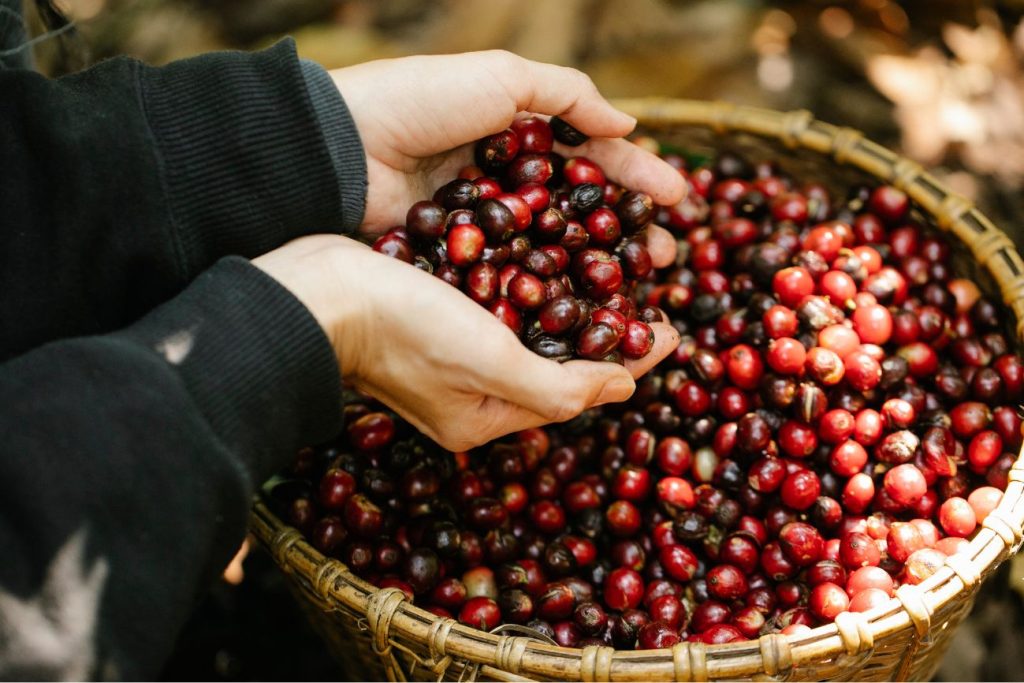
The growing conditions for Arabica vs Robusta coffee significantly influence their price, availability, and flavor profiles.
Arabica Beans
- Grows in tropical conditions and at higher altitudes of 2,000 to 6,000 ft.
- Requires regular precipitation and soil should be well drained.
- Vulnerable to pests and disease attacks.
Robusta Beans
- Thrives at elevations, typically ranging from 300 to 600 meters
- The beans withstand tough weather, not vulnerable to pest attack and easy to grow.
- They require less maintenance, contributing to their lower cost.
Arabica vs Robusta Coffee: Production Process
The production processes of Arabica and Robusta coffee also highlight their differences:
Arabica Coffee Production
- Harvesting Process: These beans are carefully selected to make sure that only the ripe cherries are selected. This process takes time and makes coffee beans expensive.
- Processing: The wet method removes the pulp from beans.
- Drying and Roasting: Arabica beans are carefully cooked and dried so to preserve their unique flavor.
Robusta Coffee Production
- Harvesting Process: They are gathered via machines or by strip-picking method, which is cost-effective but less precise.
- Processing: Processing is done via the dry method. In this method, the beans are dried in sunlight with the fruit still on them, resulting in a stronger, bolder taste.
- Drying and Roasting: High temperature is used to roast Robusta beans which improves their strong, earth-like tast.
See also : How to Choose the Right Coffee Roast: Light, Medium, or Dark?
Arabica vs Robusta Coffee: Physical Differences
Have a look at the comparison table between shape and color:
| Aspect | Arabica Beans | Robusta Beans |
| Shape | Oval shape with a curved crease | Circular shape with a straight crease |
| Color | Lighter brown appearance | Darker appearance |
Popular Uses: Arabica and Robusta Beans
Both coffee beans are used for several purposes, have a look:
| Arabica Beans Popular Uses | Robusta Beans Popular Uses |
| Specialty coffee and single-origin brews | Espresso blends (for crema and intensity) |
| Black coffee due to its smooth, mild flavor | Instant coffee (due to high caffeine and affordability) |
| Premium blends highlighting diverse flavor profiles | In Milk-based drinks (like cappuccinos, due to strong flavor) |
| Preferred for high-end cafes and artisanal coffee shops | Used in mass-market coffee due to lower cost |
| Often used in pour-over and drip coffee methods | Popular in countries with high coffee consumption like Vietnam and Italy |
Arabica & Robusta Coffee: Manufacturing Process
The essential characteristics, like taste and quality, of the coffee is dependent on the method by which the coffee beans are prepared after harvesting. Arabica and Robusta beans are prepared differently. Each method has a different way of processing.
Wet Processing vs Dry Processing
The wet processing basically involves peeling the outermost layer of the fruit. After that, the bean is processed via the fermentation method followed by washing. This is usually done for Arabica beans. It makes the coffee taste cleaner and more refined.
On the other hand, the dry processing or ‘natural’ method lets the fruit dry while still on the bean. This method gives Robusta coffee a strong, earthy dirt-like taste.
| Processing Method | Coffee Variety | Flavor Profile |
| Wet Processing | Arabica | Cleaner, more refined taste |
| Dry Processing | Robusta | Robust, earthy taste |
Effect on Final Taste
The processing method greatly affects the coffee’s taste. Arabica coffee is obtained by wet processing method. It is acidic, sweet and delicate. Fruity with notes of berries and chocolate. Dry-processed robusta coffee is less acidic, strong and intense. It’s slightly bitter and tastes like dirt.
Arabica vs Robusta Coffee: Health Advantages
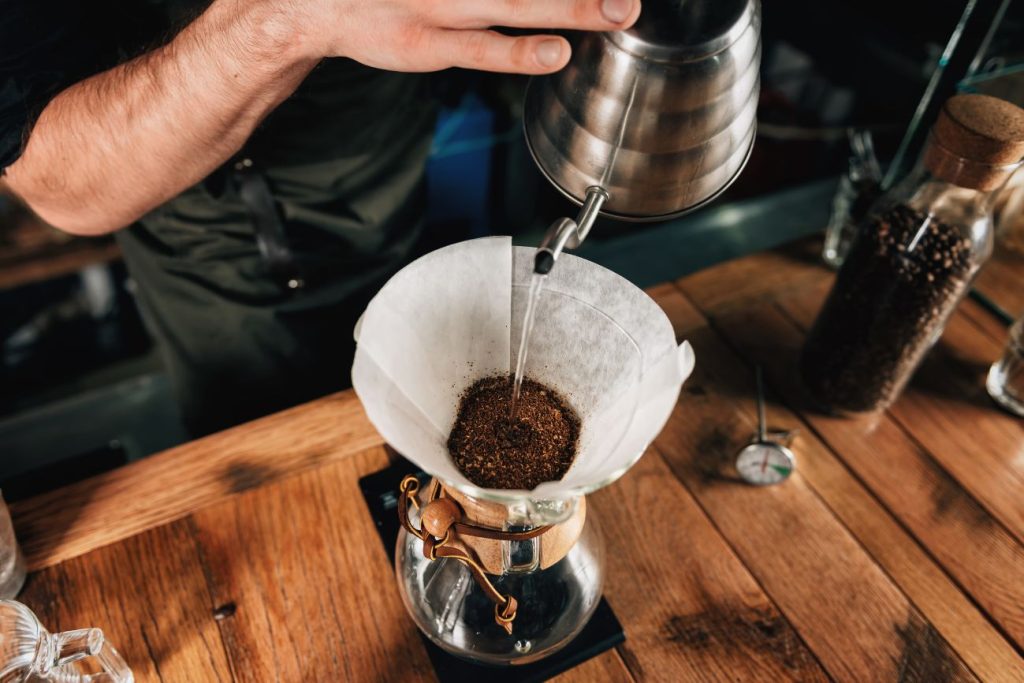
The following table shows the comparison of the benefits of Arabica vs Robusta Coffee have a look:
| Aspect | Arabica Coffee | Robusta Coffee |
| Caffeine Sensitivity | Lower caffeine, suitable for those sensitive to caffeine | High caffeine, ideal for a quick energy boost |
| Antioxidants | High levels of antioxidants, combat free radical damage | Contains chlorogenic acids, aids in fat metabolism |
| Acidity | Less acidic, suitable for those with stomach sensitivity | More acidic, caters to strong coffee enthusiasts |
| Lifestyle Appeal | Best for smooth, mild flavor preferences and health-conscious individuals | Strong flavor, crema-rich profile, preferred by robust coffee lovers and fitness buffs |
Which Coffee Should You Choose?
Well, selecting one between the two is totally up to you. However, we have provided some details related to both so that you would get some idea.
Choose Coffee Arabica if:
- You enjoy a smooth, flavorful coffee.
- You prefer black coffee or single-origin options.
- You’re seeking a luxurious coffee experience.
Choose Coffee Robusta if:
- You need a strong caffeine boost.
- You’re making espresso or instant coffee.
- You don’t want to disturb your budget and seeking for budget-friendly coffee.
Final Thoughts
Till now you have understood all the key differences between Arabica vs Robusta Coffee like
their origins, types, health and lifestyle benefits to name a few. Arabica has a delicate taste. It also contains a low amount of caffeine.
While, Coffee Robusta is preferred for low acidity and high levels of antioxidants. It’s best for those who want a strong coffee with a bitter taste like woody.
Now the ball is in your court. Either you opt for coffee Arabica or want to go with Robusta the decision is yours. We recommend you, at least once, experience the unusual differences between coffee Arabica and coffee Robusta to enhance your coffee journey today.

